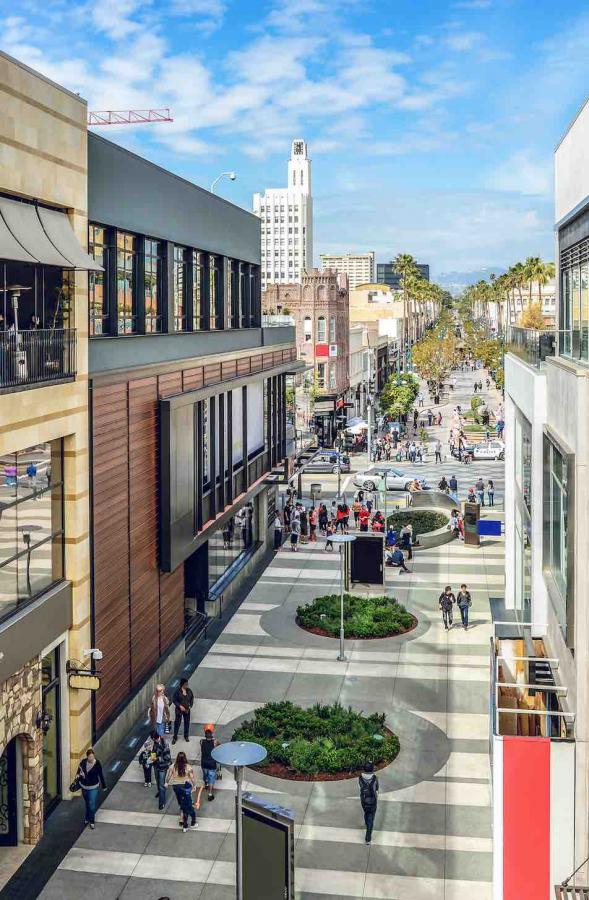Changing How We Think About Economic Development
Economic development is a perennially hot topic, but what does the term really mean? Searching online yields many definitions that differ significantly. Most city officials would likely agree that economic development aims to improve a community’s economic well-being by creating and/or retaining jobs and boosting the tax base, thus enhancing the quality of life for its residents — but economic development is more than just creating or retaining jobs and the tax base. It’s also about creating a climate that’s attractive for investors and businesses and a place where workers and their families can flourish. To attract and retain investment, a community must have cultural amenities, modern infrastructure, quality schools, broadband and a trained workforce with skills that match business needs.
We often talk about retaining existing businesses as an important component of economic development, and while that is certainly true, it is also about retaining residents — especially young people who want jobs and seek opportunities.
Cities Use a Variety of Approaches
What does economic development look like in our cities?
In some smaller California cities, where the city manager (or another city employee) is typically wearing many hats and doing work that spans multiple departments or disciplines, economic development may consist of simply showing up to represent the city at the local chamber of commerce breakfast every month.
At the next level, if a city has staff whose job responsibilities include economic development, such activities may include working more directly with the business community and reviewing ordinances to reduce costs by streamlining permitting or inspection processes while maintaining safety and environmental standards. For many cities, it’s important to ensure they are not part of the problem — that is to say, local regulations do not inadvertently impede or constrain business development and economic activities.
Some communities without staff for economic development activities rely on economic development consultants, whose services may be funded with Community Development Block Grant (CDBG) dollars.
If a city’s population is greater than 50,000, it receives CDBG funding directly from the federal government. Cities with a population of less than 50,000 can apply to the state’s Department of Housing and Community Development for an allocation of CDBG dollars. An effective consultant knows how the state’s program works and helps their client city navigate the state system.
New Tools Offer Opportunities
The state’s redevelopment program was a very effective tool for economic development, but when the State of California eliminated it several years ago, it left a vacuum in cities’ economic development toolkit.
The Enhanced Infrastructure Financing District (EIFD) and Community Revitalization Investment Authority (CRIA) are relatively new tools that offer opportunities for communities seeking ways to stimulate economic activity in the absence of redevelopment. These tools offer access to tax-increment financing in different ways with new authority attached (see “More About the New Tools” below).
Compared with redevelopment, however, the new tools have reduced financial capacity — so innovative approaches and new partnerships between local governments and the business community are needed to maximize their potential.
Leveraging Federal Funds
City officials nationwide understand the importance of leveraging federal funds to maximize the return on investment. For example, every $1 of CDBG typically generates $3 to $4 in other funding.
When I served as deputy mayor in Indianapolis (from 2001–05), the city used a $4 million Home Ownership Zone grant from the U.S. Department of Housing and Urban Development to transform a historic neighborhood long plagued by blight, high crime rates and decades of disinvestment. Vacant lots and abandoned and dilapidated homes were acquired; new streets, sidewalks, lighting and utilities were installed and trees planted; four new parks were built; and special financing packages were assembled for homebuyers. Over 400 families moved in, joining many longtime residents, and now call the neighborhood home. More than $50 million in private investment revitalized the neighborhood, now known as Fall Creek Place.
This project:
- Brought $18 million in annual household income to the area;
- Created 14,000 square feet of new retail space; and
- Generates $1.2 million in annual tax revenue for the city.
Local officials know that leveraging federal dollars can provide a very healthy return on investment, as the Fall Creek Place project illustrates. It’s critically important to maintain these tools that create strong environments for investment in our communities, and that is why cities are fighting now to preserve federal funding for programs like CDBG.
Building a Tax Base
“We need more tax base” is frequently heard in local government circles. It’s a goal for local officials nationwide, and it presents a major challenge. Without an adequate tax base, cities won’t have the resources to support the delivery of basic services that residents expect like public safety, roads and bridges, and schools.
For example, if I want to live in Emerald City, I must feel safe there, my kids need quality schools to attend, and I need a secure place to live and a job that pays a competitive salary. If the resources to create these things don’t exist, the city is less attractive to investors and employers.
Annexation is one method cities use to increase their tax base. Another new economic development tool, the Annexation Development Plan (ADP), offers a way for consenting local agencies (city and/or a county or special district) to adopt tax-increment financing to improve or upgrade structures, roads, sewer or water facilities or other infrastructure as part of annexing a disadvantaged unincorporated community. An ADP can be implemented by a special district either formed for this purpose or incorporated into the duties of an existing special district. After the Local Agency Formation Commission (LAFCO) approves the annexation, the special district can issue debt without an additional vote. Cities can use an ADP to make the infrastructure improvements that are essential elements of attracting and retaining jobs and investments, which are especially needed in disadvantaged communities.
Any discussion of the tax base must consider that our present system of state and local taxation is outdated. Data from the California State Board of Equalization and California Bureau of Labor Statistics personal income data demonstrate that local sales tax collections as a percentage of personal income have fallen from 0.50 percent in 1980 to 0.32 percent in 2016. Many retail sales avoid taxation due to two major factors:
- The shift in consumer consumption from taxable retail goods to untaxed services; and
- The growth of e-commerce that largely escapes taxation.
Since 2005, e-commerce as a share of total retail sales has increased from 2.4 percent to 8.3 percent, according to the U.S. Census Bureau. In the fourth quarter of 2016, total retail sales nationwide increased 2.9 percent from 2015 — and e-commerce sales increased 15.1 percent.
California’s composite sales tax rate is among the highest in the nation and its base among the narrowest. Services and intangible goods are not taxed, but that is where the growth in the economy is occurring. This issue will continue to present challenges for our local and state governments, and it’s an area that requires strong leadership to craft responsive solutions.
Inclusion as an Economic Development Factor
On the private sector’s side of economic development, location and the ability to expand in the future are key components of a growth strategy. As mentioned earlier, businesses look for communities that have robust infrastructure, broadband, schools, a trained workforce and cultural amenities. These community assets also correlate with quality of life for employees and are therefore a prime concern for businesses when making decisions about where to locate or expand.
Cities have traditionally approached economic development in terms of providing tax incentives for businesses they sought to attract or retain. However, cultural and social issues that affect the quality of life are now playing a central role in a community’s ability to attract or keep businesses.
Before it was repealed in 2017, North Carolina’s passage of House Bill 2 (HB 2) in 2016 cost the state millions of dollars in lost revenue. HB 2 barred local governments from passing nondiscrimination ordinances and mandated that in government facilities, transgender people must use the bathroom that corresponds with their biological gender rather than their gender identity. Major corporations, including Bank of America, PayPal and Deutsche Bank, canceled plans to locate or expand in the state, resulting in a net loss of $297 million. Major sporting events moved elsewhere, taking with them $246 million. North Carolina lost $18 million in convention business. Numerous entertainers and musical acts, including Bruce Springsteen, Cirque du Soleil, Itzhak Perlman and Ringo Starr, refused to perform there. Film companies, including A&E Studios, Turner Broadcasting and Lionsgate, canceled future productions in North Carolina, and at least five states, 21 cities and the United Kingdom banned government-funded travel to the state. The repeal of HB 2 in 2017, however, did not change the provision that barred local governments from adopting nondiscrimination ordinances; thus, while the National Collegiate Athletic Association (NCAA) “reluctantly agreed” to bring sporting events back to North Carolina, it is not yet clear whether the repeal’s provisions are sufficient to satisfy the concerns of the entertainment industry and others.
Arizona’s refusal in 1987 to observe the Martin Luther King, Jr. Day holiday caused dozens of groups — including the National League of Cities — to cancel conventions in Phoenix. The NFL pulled the 1993 Super Bowl out of Tempe and said it would bring the 1996 Super Bowl to Arizona if the law was changed. Arizona did not change its law to observe the King holiday until five years later in November 1992, after it had lost hundreds of millions of dollars worth of business over the preceding five years. And more recently, Arizona’s anti-immigration law, passed in 2010, generated a wave of business boycotts totaling $141 million in just the first few months after its passage.
These examples illustrate that beyond the traditional factors that businesses might consider when deciding to locate or expand, the degree to which a community is or is perceived to be inclusive or welcoming to their employees is also a factor. As city leaders go forward to build strong communities with healthy economies, inclusivity will be a key consideration. Existing and potential employers want to know: What kind of community do you offer my workers and their families, and how inclusive is it? It will become incumbent on local leaders to monitor, manage and lead in that framework.
A Web of Interdependent Factors
Economic development is about creating a place where people want to put their dollars and businesses want to invest. It involves a web of interdependent factors. Without investment, there are no jobs, and without jobs, little incentive exists for young people and workers to remain in the community. To attract and retain jobs and investments from the private sector, a city must have infrastructure, services, cultural amenities, quality schools and a trained workforce. A robust community needs an adequate tax base to support essential services and infrastructure, and an adequate tax base requires workers and job opportunities.
It may be helpful for city officials to think of economic development as both a strategy and a process. In addition, it may be constructive to take a holistic approach in which all the essential public services that comprise a healthy, thriving city are valued for the direct benefits they offer the community and for the way their contributions support the city’s ability to retain and attract new investments. For example, considering the value of parks and recreation as not only central to a city’s quality of life — but also an integral component of its attractiveness and appeal for businesses and investors — may provide a fresh perspective for policy-makers and residents alike.
The quality of local schools also plays a major role in how communities attract investment as well as workers and their families. Highly ranked schools can act as a magnet for economic growth. Local officials should work with their school districts as part of the effort to make the community appealing to families and employers.
California’s 482 cities span a broad spectrum ranging from modest to highly sophisticated in their economic development efforts. The League supports these efforts through its Housing, Community and Economic Development Policy Committee, education and conferences, and advocacy on behalf of its member cities. We welcome your ideas and encourage you to share your city’s economic development best practices and innovative approaches as part of our collective work to enhance the quality of life for all Californians.
Photo credit: MTaira/Shutterstock.com (cityscape); BondRocketImages/Shutterstock.com (pond)
This article appears in the May 2017 issue of Western
City
Did you like what you read here? Subscribe to Western City






